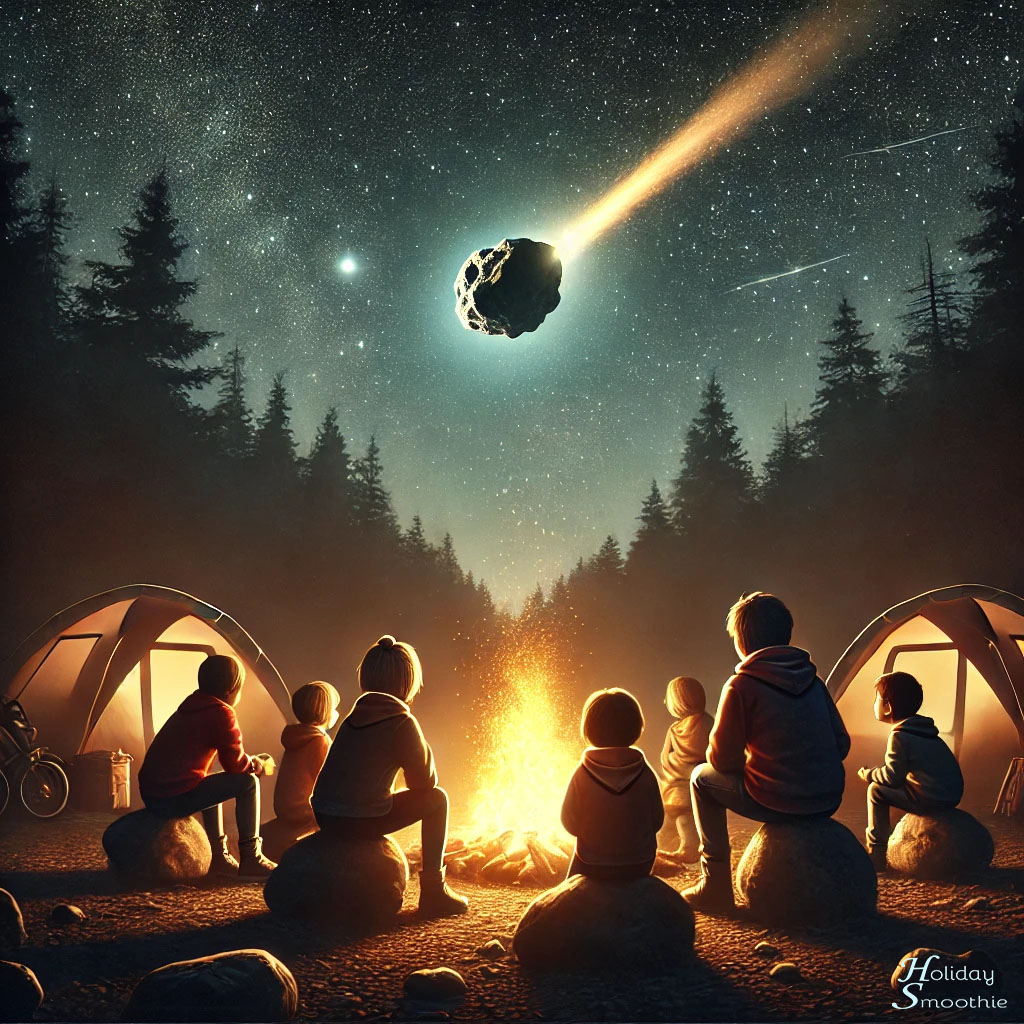International Asteroid Day: Raising Awareness and Understanding
Introduction
International Asteroid Day is celebrated annually on June 30th to raise awareness about asteroids, their role in our solar system, and the potential threat they pose to Earth. This global event was co-founded by astrophysicist and musician Dr. Brian May, filmmaker Grig Richters, B612 Foundation President Danica Remy, and Apollo 9 astronaut Rusty Schweickart. The date marks the anniversary of the 1908 Tunguska event, the most harmful known asteroid-related event in recent history.
Historical Context
On June 30, 1908, an asteroid or comet exploded over the Tunguska region in Siberia, flattening around 2,000 square kilometers of forest. The event highlighted the potential danger of near-Earth objects (NEOs) and the need for scientific study and preparedness. While no human casualties were recorded, the Tunguska event serves as a stark reminder of the destructive power of asteroids.
Objectives of International Asteroid Day
- Education and Awareness: One of the primary goals is to educate the public about asteroids and their potential impact on Earth. This includes understanding the scientific study of asteroids, their origins, compositions, and trajectories.
- Promoting Scientific Research: International Asteroid Day encourages scientific research and the development of technologies to detect, track, and deflect potentially hazardous asteroids. It highlights the importance of international collaboration in these efforts.
- Preparedness: Raising awareness about the potential threat of asteroid impacts and the importance of preparedness is a key focus. This includes advocating for emergency response plans and global cooperation to mitigate the effects of an asteroid impact.
- Celebrating Space Exploration: The day also celebrates the achievements of space missions that study asteroids, such as NASA’s OSIRIS-REx, Japan’s Hayabusa2, and ESA’s Hera mission. These missions provide valuable insights into the nature of asteroids and their potential for resource utilization.
Activities and Events
- Public Lectures and Panels: Scientists and experts give talks and participate in panel discussions about asteroid science, the history of asteroid impacts, and current research initiatives. These events are often streamed online for global access.
- Workshops and Educational Programs: Schools, universities, and science centers host workshops and educational programs to engage students and the public. These activities aim to inspire interest in space science and astronomy.
- Film Screenings and Documentaries: Various documentaries and films about asteroids and space exploration are screened. This includes the documentary “51 Degrees North,” which explores the potential consequences of an asteroid impact on Earth.
- Telescope Viewing Sessions: Amateur and professional astronomers organize telescope viewing sessions to observe asteroids and other celestial bodies, promoting hands-on learning and interest in astronomy.
- Social Media Campaigns: Social media platforms are used to spread information, share live updates from events, and engage with a global audience. Hashtags like #AsteroidDay help to create a unified online presence.
Significance and Impact
International Asteroid Day plays a crucial role in bridging the gap between the scientific community and the public. By highlighting the importance of asteroid research and preparedness, it fosters a global dialogue about planetary defense and space exploration. The day emphasizes that while asteroids pose a potential threat, they also offer opportunities for scientific discovery and resource utilization.
Conclusion
International Asteroid Day is a vital event that raises awareness about asteroids and their impact on our planet. It celebrates scientific achievements, promotes research and preparedness, and fosters a sense of global cooperation. As we continue to explore and understand our solar system, International Asteroid Day serves as a reminder of the need to protect our planet and prepare for the future.
Cosmic Blueberry Spinach Smoothie Recipe for International Asteroid Day
Ingredients and Their Significance:
- 1 cup fresh blueberries: Blueberries symbolize the vast, dark expanse of space and are rich in antioxidants, vitamin C, and fiber.
- 1 cup baby spinach: Spinach adds a nutrient boost with vitamins A, C, K, and iron, symbolizing the green, life-sustaining aspects of our planet.
- 1 banana: Bananas provide natural sweetness and potassium, representing the solid, reliable nature of Earth amidst the cosmos.
- 1/2 cup Greek yogurt: Greek yogurt adds creaminess and protein, symbolizing the thick atmospheres of distant planets.
- 1 tablespoon chia seeds: Chia seeds add a nutritional boost with omega-3 fatty acids, fiber, and protein, symbolizing the building blocks of life.
- 1 tablespoon honey: Honey adds a touch of natural sweetness, symbolizing the hope and sweetness of scientific discovery.
- 1/2 cup almond milk (or any milk of choice): Almond milk helps achieve the desired consistency and adds calcium and vitamin D, symbolizing the sustenance needed for long space journeys.
- Ice cubes: Makes the smoothie cold and refreshing, perfect for enjoying while contemplating the mysteries of space.
Instructions:
- Prepare the Ingredients: Gather all your ingredients. Rinse the blueberries and spinach, and peel the banana.
- Blend: In a blender, combine the blueberries, baby spinach, banana, Greek yogurt, chia seeds, honey, and almond milk. Blend until smooth.
- Adjust Consistency: If the smoothie is too thick, add a bit more almond milk until you reach your desired consistency. If you prefer a colder smoothie, add a few ice cubes and blend again.
- Taste and Adjust: Taste the smoothie and add more honey if you prefer a sweeter taste.
- Serve: Pour the smoothie into a glass. Optionally, garnish with a few extra blueberries or a sprinkle of chia seeds for added texture and visual appeal.
- Enjoy: Enjoy your Cosmic Blueberry Spinach Smoothie as a delicious and nutritious treat to celebrate International Asteroid Day, contemplating the wonders of the universe while nourishing your body.
Nutrition Summary (per serving):
- Calories: Approximately 200
- Carbohydrates: 35g
- Protein: 8g
- Fat: 4g
- Fiber: 7g
- Vitamins & Minerals:
- High in vitamins A and C (from spinach and blueberries)
- Potassium (from banana)
- Calcium and vitamin D (from almond milk)
- Omega-3 fatty acids (from chia seeds)
This Cosmic Blueberry Spinach Smoothie combines fresh, nutrient-dense ingredients to create a delicious and meaningful tribute to International Asteroid Day. Enjoy!









